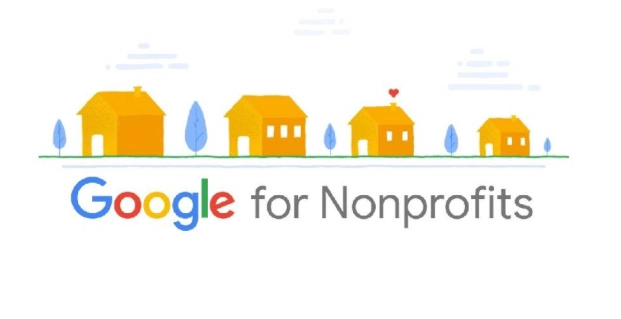Table of Contents[Hide][Show]
Marketing and nonprofits often face unique challenges. How can nonprofits effectively promote their mission, engage supporters, and raise funds on tight budgets? This article provides essential strategies and practical tips to help nonprofits achieve their goals through smart marketing techniques.
Understanding Nonprofit Marketing

Nonprofit marketing is a specialized form that focuses on promoting social causes, securing donations, and engaging supporters to further a nonprofit organization’s mission. Unlike for-profit businesses, nonprofit organizations aim to create social impact rather than generate profits. This fundamental difference shapes the approach and strategies used in nonprofit marketing.
Nonprofit marketing employs diverse strategies and channels to promote the organization within budget constraints. The ultimate goal is to support an overarching marketing strategy comprised of multiple campaigns, each addressing specific goals aligned with the organization’s mission. It builds trust and fosters a community of engaged supporters by promoting causes, acquiring donations, and engaging volunteers through a nonprofit marketing campaign, all of which can be outlined in a nonprofit marketing plan. Additionally, effective nonprofit marketing strategies can enhance these efforts. A/B testing in nonprofit marketing campaigns is crucial as it allows organizations to make data-driven decisions, improving the effectiveness of these campaigns by identifying what resonates best with supporters.
Yet, this form of marketing has its own set of challenges. A one-off approach to each new campaign often results in inconsistent messaging and reduced effectiveness. Additionally, limited budgets, inability to track efficacy, and reliance on outdated methods are common obstacles that nonprofit marketers face.
Despite these challenges, modern marketing can amplify a nonprofit’s voice across multiple channels and drive interaction to support organizational priorities.
What is Nonprofit Marketing?
This form of marketing includes various strategies and channels to promote causes, secure donations, and attract and retain supporters. It involves promoting the organization within budget constraints while supporting a comprehensive strategy made up of multiple campaigns. These campaigns are each tailored to specific goals aligned with the nonprofit’s mission, such as raising awareness, increasing donations, or engaging volunteers. A/B testing in nonprofit marketing campaigns can help identify what resonates best with supporters, ultimately improving engagement and donations.
Nonprofits can utilize both inbound and outbound marketing approaches to achieve their goals. Inbound marketing invites new supporters, builds visibility, and creates engagement opportunities, whereas outbound marketing extends the nonprofit’s reach to individuals who might not encounter the organization’s cause otherwise. Utilizing a multi-channel approach enhances follow-up with supporters and ensures that the nonprofit’s message reaches a broader audience.
Utilizing diverse marketing strategies and channels helps nonprofits build trust, foster a community of engaged supporters, and advance their mission. Whether through digital marketing, social media marketing, or traditional channels, nonprofit marketers must be strategic and intentional to maximize impact and achieve their goals.
Importance of Marketing for Nonprofits
It’s vital for increasing program visibility and attracting financial support and volunteers. By implementing a coherent marketing strategy, nonprofits can enhance their ability to communicate their mission and attract the necessary resources to achieve their goals. Effective use of social media can significantly improve a nonprofit’s connection with its community and drive donations.
Moreover, analyzing marketing performance allows nonprofits to make informed decisions about resource allocation. This ensures that marketing efforts are focused on the most impactful activities, leading to greater success in achieving the organization’s mission.
Essentially, effective nonprofit marketing drives action and increases the visibility of nonprofit initiatives.
Challenges in Nonprofit Marketing
Unique challenges in nonprofit marketing can hinder campaign effectiveness. A one-off approach with each new campaign often leads to inconsistent messaging and reduced impact. This fragmented approach can make it difficult for nonprofits to build a cohesive brand and effectively engage supporters.
Typical obstacles include limited budgets, challenges in tracking effectiveness, and reliance on outdated methods. These challenges can prevent nonprofits from maximizing their marketing efforts and achieving their goals. Additionally, a poor donor experience can significantly hinder marketing results, creating barriers to engagement and retention.
To overcome these challenges, nonprofits must focus on a few high-priority wins to create meaningful momentum. A strategic approach to outbound marketing, even on a limited budget, allows nonprofits to prioritize impactful campaigns and amplify their voice across multiple channels. Modern marketing techniques can help nonprofits drive interaction and support organizational priorities, ultimately leading to greater success in achieving their mission.
Key Components of a Nonprofit Marketing Strategy
A successful nonprofit marketing strategy comprises several vital components that work together to achieve the organization’s goals. The two main approaches to nonprofit marketing are inbound and outbound marketing, each playing a crucial role in engaging supporters and promoting the nonprofit’s mission. A well-rounded marketing strategy should also include a clear marketing budget and a multichannel approach to maximize outreach efforts.
Clear marketing goals drive greater outcomes and measure success effectively. A/B testing in nonprofit marketing campaigns can help nonprofits make data-driven decisions to enhance their campaigns’ effectiveness. Identifying target audiences helps tailor marketing messages to resonate with specific groups while crafting compelling marketing messages ensures that the nonprofit’s mission is effectively communicated. Focusing on these components helps nonprofits optimize their strategy, secure more support, and further their mission.
Collaborative marketing efforts between nonprofits can also enhance marketing effectiveness by pooling resources and increasing overall impact and reach. This approach allows nonprofits to share resources and work together toward common goals, leading to more effective marketing campaigns and greater success.
Setting Clear Marketing Goals
Clear marketing goals guide efforts and measure success effectively. Nonprofits can use the SMART framework (Specific, Measurable, Achievable, Relevant, Time-bound) to set clear and actionable goals. This method ensures that each marketing campaign has a concrete goal and target action, improving focus and outcomes.
Selecting relevant KPIs aligned with specific goals allows nonprofits to measure success accurately and make data-driven decisions. A/B testing in nonprofit marketing campaigns can help optimize strategies and improve engagement. Assessing the cost of marketing per conversion is also vital for evaluating the efficiency of marketing expenditures and ensuring that resources are allocated effectively.
Creating SMART goals offers a comprehensive roadmap to assess progress and achieve a marketing plan and marketing objectives.
Identifying Target Audiences
Understanding target audiences is crucial for tailoring effective marketing messages. Nonprofits can segment their audience based on common characteristics such as demographics, interests, and preferences. Audience personas help nonprofits target specific messaging, ensuring marketing efforts resonate with the intended audience.
An engaging social media presence effectively connects with the target audience. Requesting quotes from nonprofit influencers can enhance networking and provide valuable insights to share with social media posts followers.
Understanding and segmenting target audiences allows nonprofits to create impactful campaigns and achieve goals.
Crafting Compelling Marketing Messages
Compelling marketing messages engage supporters and drive action. Nonprofits should highlight all the work the organization aims to achieve to inspire potential donors and raise awareness. Leveraging current events in your content marketing can create urgency and connect the nonprofit’s mission to broader issues.
Incorporating visuals boosts recall, as people retain 55% of information when paired with images. Well-designed marketing materials can reel supporters in and drive action. Nonprofits can use video marketing effectively by incorporating videos on websites, social media, and emails.
Consistent messaging across multiple platforms enhances trust and understanding of the nonprofit’s mission. Focusing on compelling messages helps nonprofits engage supporters and achieve marketing goals.
Effective Marketing Channels for Nonprofits

A variety of marketing channels increase visibility and effectiveness. A multi-channel approach allows nonprofits to reach a broader audience and engage supporters through different platforms. Regularly reviewing performance metrics helps adjust marketing strategies and ensures that efforts are focused on the most impactful activities. A/B testing in nonprofit marketing campaigns can help improve the effectiveness of campaigns across different channels.
Both digital and traditional channels help nonprofits promote their mission and engage supporters. Digital marketing channels such as social media, email, and SEO offer cost-effective ways to reach and connect with supporters online.
Traditional channels like direct mail and events provide a personal touch that strengthens supporter relationships. Combining digital and traditional channels maximizes outreach efforts and achieves goals.
Digital Marketing Channels
Digital marketing engages supporters through various online platforms, enhancing outreach and visibility. Leveraging content marketing to create high-quality, informative, and engaging content can significantly boost a nonprofit’s online presence. SEO helps get content in front of more people, increasing visibility and driving traffic to the nonprofit’s website.
Social media is a viable channel for nonprofit marketing, as it is affordable and key for deeper supporter connections. Consistently publishing valuable content on social media improves search rankings and can increase sharing. Regular engagement through social media results in higher visibility and better connections with supporters.
Email marketing can also help nonprofits effectively connect with first-time and regular donors. Implementing SEO strategies and leveraging social media and email marketing enhance digital marketing efforts.
Traditional Marketing Channels
Traditional channels like direct mail and events significantly impact nonprofit outreach. Direct mail marketing, which involves writing, printing, and sending hard copy requests for funds, event invitations, or thank-you letters, offers a personal touch that strengthens supporter relationships. Direct mail has a typical response rate of around 9%, significantly higher than the typical 1% response rate for email marketing.
Though digital channels are cost-effective for reaching a broad audience, traditional methods create meaningful connections with supporters. Integrating conventional and digital efforts creates a comprehensive strategy that maximizes outreach and engagement.
Leveraging Video Marketing
Video marketing effectively communicates a nonprofit’s mission and impact. Through storytelling in videos, nonprofits can showcase their stories and events, making campaigns more relatable and engaging for donors. Video marketing allows nonprofits to connect emotionally with donors, encouraging them to support their cause.
Leveraging video marketing enhances engagement, bringing the mission to life and fostering deeper audience connection. Whether through social media platforms, websites, or emails, incorporating video content can significantly boost brand awareness and drive action.
Utilizing Google Ad Grants

Google Ad Grants provide nonprofits with an excellent opportunity to enhance their visibility and attract supporters through free advertising. Applying for Google Ad Grants offers $10,000 monthly ad credits to promote the mission and attract supporters. Effective use of Google Ads significantly enhances visibility among potential supporters.
Leveraging Google Ad Grants promotes organizational goals like educating supporters, attracting volunteers, and raising funds. To make the most of these grants, nonprofits must adhere to Google’s guidelines and optimize their ad campaigns for maximum impact.
Eligibility and Application Process
Compliance with Google guidelines is necessary to maintain eligibility for the Google Ad Grant. The application process involves meeting Google’s quality standards and completing the necessary steps to access free advertising credits. Nonprofits must adhere to specific guidelines to maintain eligibility for the Google Ad Grant.
The process is straightforward and accessible, allowing nonprofits to utilize Google Ads to enhance their visibility and reach a broader audience. Following the application process and meeting eligibility criteria allows nonprofits to utilize this valuable resource.
Maximizing Google Ad Grant Benefits
Maximizing Google Ad Grants benefits requires strong ad copy, high-quality content, and a modern website. Educational content and involvement opportunities are most likely to attract positive results from Google Ads. Structuring campaigns with specific keyword-focused ad groups helps achieve overarching goals and ensures that ads are relevant and impactful.
Consistent monitoring and adjustments are crucial for optimizing Google Ad campaigns and maximizing the benefits of the ad credits. Consulting with a Google Grants agency can also help nonprofits ensure compliance with grant program requirements and efficiently handle the complexities of the Google Grant process.
Best Practices for Nonprofit Social Media Marketing
Social media is one of the biggest online assets for nonprofits to reach and engage with supporters. Regular, effective communication maintains relationships with supporters, keeping them engaged and growing the nonprofit’s network. Peer-to-peer outreach is particularly powerful, as 88% of consumers trust recommendations from loved ones, highlighting the potential of engaging supporters in spreading the nonprofit’s message.
Implementing best practices for social media marketing maximizes impact and achieves goals. This includes creating engaging content, building a strong social media presence, and leveraging influencer marketing to broaden their reach and attract new supporters.
Creating Engaging Social Media Content
Engaging social media content encourages interaction and builds a nonprofit brand personality. Utilizing user-generated content enhances credibility by showcasing authentic experiences from supporters. Encouraging users to share their own stories can help create genuine content that resonates with a broader audience.
Creating engaging social media content boosts brand awareness and fosters deeper supporter connections. This approach helps build a loyal community that is actively involved in the nonprofit’s mission.
Building a Strong Social Media Presence
Building a robust social media presence is essential for raising awareness and engaging with supporters. A content calendar helps organize posting schedules and ensures consistent engagement. Utilizing social media tools like polls and live sessions can enhance interaction with followers.
Regularly acknowledging and profiling supporters and volunteers fosters community engagement and appreciation. A solid social media presence effectively communicates the mission and builds a loyal supporter base.
Using Influencer Marketing
Partnering with influencers can broaden a nonprofit’s reach and attract new supporters through trusted voices. Collaborating with influencers can significantly increase a nonprofit’s visibility and credibility through their established audiences. Influencer collaborations can amplify fundraising efforts by reaching audiences that may not be familiar with the nonprofit’s mission.
The overall impact of influencer marketing allows nonprofits to leverage trust and connections to expand their reach and enhance their message. Collaborating with the right influencers enhances marketing efforts and achieves tremendous success.
Budget-Friendly Marketing Ideas for Nonprofits

Nonprofits often operate with limited budgets, so focusing on cost-effective marketing strategies is essential. Maximizing marketing efforts within budget constraints enhances visibility and outreach. Saving money in other marketing areas allows nonprofits to allocate resources to creating the best online content.
Several budget-friendly marketing ideas can help nonprofits amplify their message and reach a broader audience. These include leveraging user-generated content, hosting virtual events, and collaborating with other organizations to share resources and increase impact.
Leveraging User Generated Content
User-generated content harnesses supporters’ creativity to showcase a nonprofit’s mission and impact. By creating dedicated hashtags and campaigns, nonprofits can encourage supporters to share their stories related to the organization. This approach enhances advocacy and raises awareness through meaningful user-generated content.
Marketing on a limited budget requires nonprofits to prioritize strategic actions that yield the highest impact. Leveraging user-generated content creates engaging campaigns with minimal investment and builds a community around shared values.
Hosting Virtual Events
Virtual events offer nonprofits an innovative way to connect with supporters while minimizing costs. They help increase outreach by allowing participation from individuals who may not be able to attend in-person events due to geographical or financial constraints. Clear objectives, engaging content, and appropriate technology are essential to successful virtual events.
Additionally, nonprofits should promote their events through social media and email marketing to maximize attendance and engagement. Hosting virtual events connects nonprofits with a broader audience and achieves goals more cost-effectively.
Collaborating with Other Organizations
Collaborating with other organizations can significantly enhance a nonprofit’s outreach and resource availability. Partnerships with other nonprofits or local businesses allow for shared resources and broader visibility in the community. It is essential to thoroughly vet potential partners for their reputation and trustworthiness to ensure a successful collaboration.
Collaborating with other organizations allows nonprofits to pool resources, share expertise, and work towards common goals. This approach enhances marketing effectiveness and increases the overall impact of the nonprofit’s mission.
Measuring Marketing Performance
Measuring marketing performance is crucial for ongoing success and helps nonprofits stand out. Effective marketing tracking raises donations and increases awareness of nonprofit programs. Conducting a nonprofit marketing audit helps assess current marketing capabilities and resources.
Tracking performance and Key Performance Indicators (KPIs) is essential for measuring nonprofit marketing success. Regularly evaluating marketing efforts helps identify areas for improvement and make data-driven decisions.
Key Performance Indicators (KPIs)
Key Performance Indicators (KPIs) are essential for nonprofits to gauge the effectiveness of their marketing strategies and overall success. Tracking online donation amounts, donor retention rates, and social media engagement metrics provides valuable insights into supporter loyalty and involvement.
Monitoring website traffic, click-through rates, and conversions optimizes marketing strategies and evaluates digital marketing effectiveness. Focusing on these KPIs helps nonprofits measure marketing performance and achieve goals.
Tools for Tracking and Analysis
Using tools like Google Analytics and social media insights can provide essential data for tracking nonprofit marketing effectiveness. Data analytics tools are crucial for nonprofits to monitor campaign performance effectively and refine their strategies. Custom analytics dashboards can help nonprofits visualize their key metrics and performance indicators.
Tracking marketing efforts is crucial for understanding campaign effectiveness and making informed decisions. Using these tools optimizes marketing strategies and achieves greater outreach success.
Summary
In summary, effective nonprofit marketing requires a strategic approach that includes setting clear goals, identifying target audiences, and crafting compelling messages. Utilizing a multi-channel marketing approach, including both digital and traditional channels, is essential for maximizing outreach and engagement. Leveraging Google Ad Grants and social media, best practices can significantly enhance a nonprofit’s visibility and attract supporters.
By measuring marketing performance and using budget-friendly strategies, nonprofits can optimize their marketing efforts and achieve their mission. Implementing these tips and best practices will help your nonprofit create a robust and effective marketing strategy that drives positive change and supports your organization’s goals.
Frequently Asked Questions
What is nonprofit marketing, and why is it important?
Nonprofit marketing is all about spreading the word about your cause, attracting donations, and connecting with supporters. It’s essential because it boosts visibility and helps secure the resources needed to make a real impact.
How can nonprofits set clear marketing goals?
To set clear marketing goals, nonprofits should use the SMART framework, ensuring their objectives are Specific, Measurable, Achievable, Relevant, and Time-bound. This approach helps clarify their direction and assess progress effectively.
What are some effective digital marketing channels for nonprofits?
For nonprofits, social media, email marketing, SEO, and video marketing are your best bets for reaching and engaging your audience. These channels help you connect effectively and spread your message widely.
How can nonprofits leverage Google Ad Grants?
Nonprofits can leverage Google Ad Grants by using the $10,000 in monthly ad credits to boost their visibility and connect with potential supporters. It’s a fantastic way to promote your mission and grow your impact!
What are some budget-friendly marketing ideas for nonprofits?
To keep costs low, consider using user-generated content, hosting virtual events, and partnering with other organizations. These strategies can help boost your reach without breaking the bank!

 User Generated Content vs Brand Generated Content: The Best Choice for Your Marketing Strategy
User Generated Content vs Brand Generated Content: The Best Choice for Your Marketing Strategy